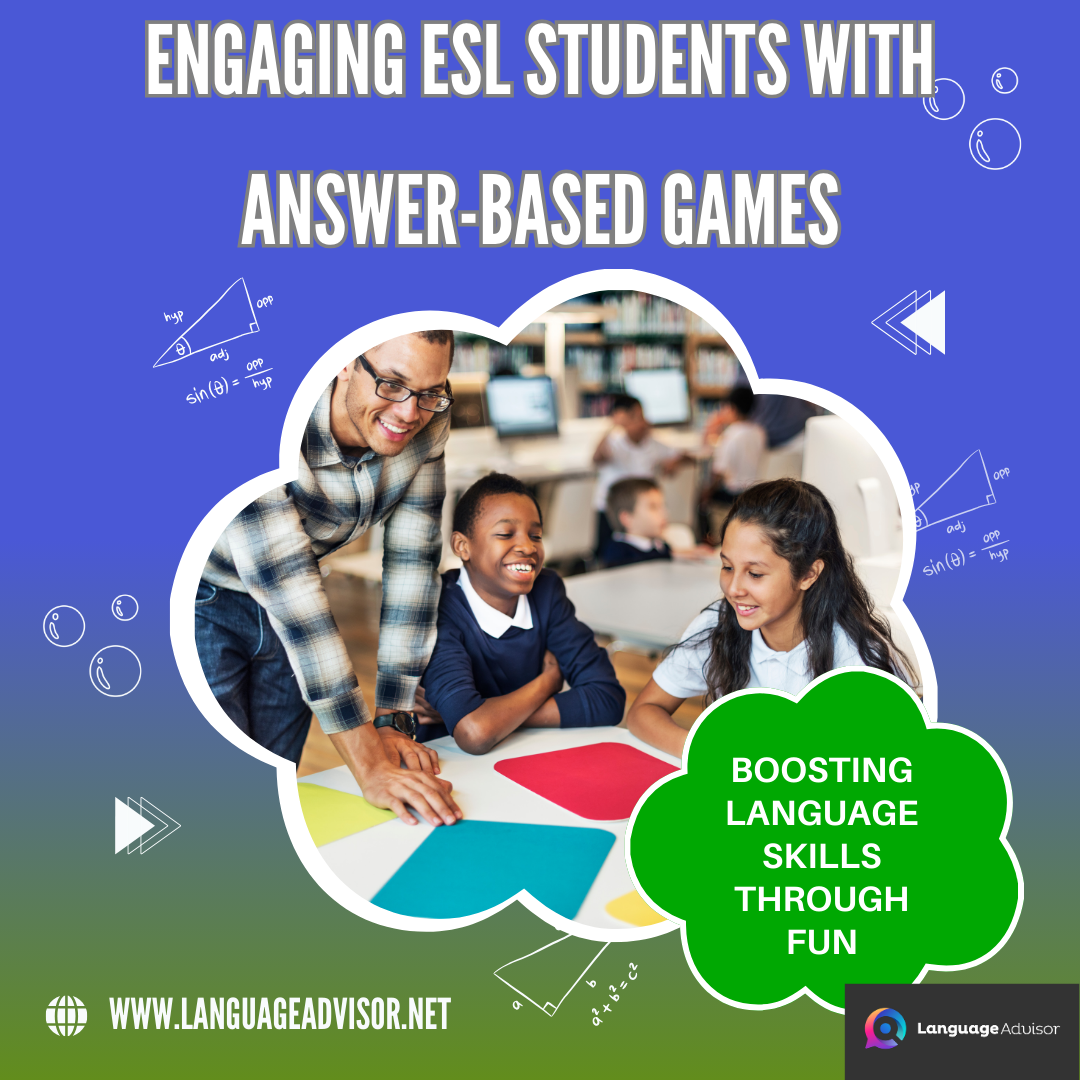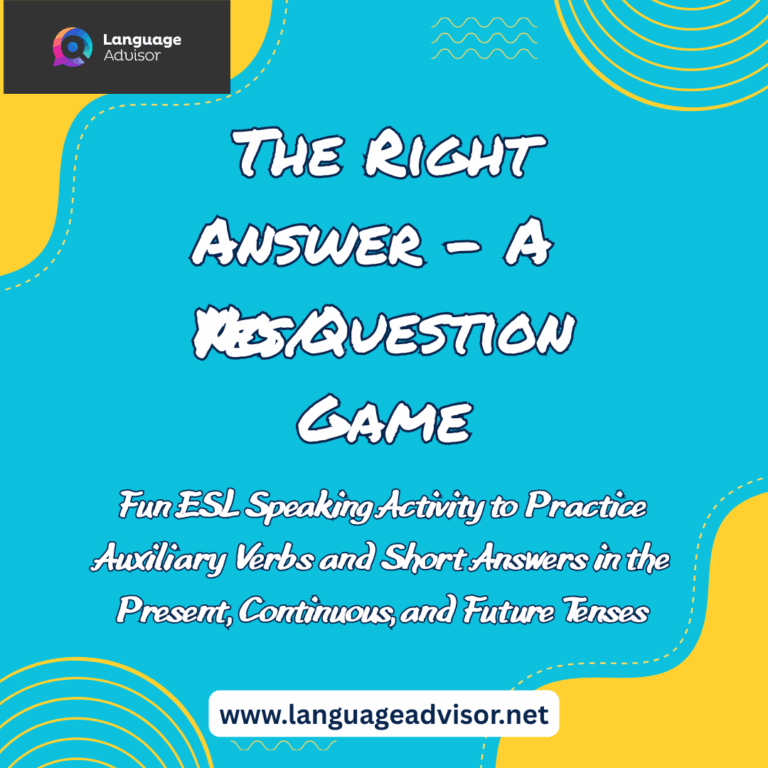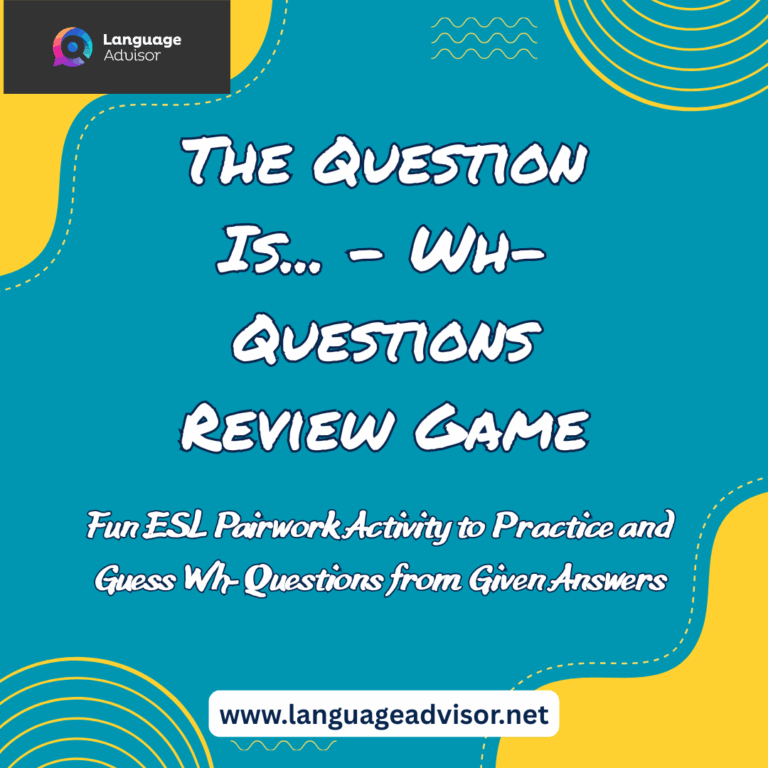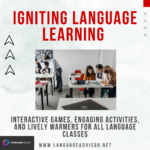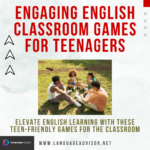Engaging ESL Students with Answer-Based Games: Boosting Language Skills Through Fun
Engaging ESL Students with Answer-Based Games

Teaching English as a Second Language (ESL) can be both challenging and rewarding. One effective method to enhance student engagement and learning is through interactive games that focus on giving answers. These games not only make learning fun but also encourage students to practice their language skills in a dynamic and supportive environment. In this blog post, we will explore a variety of answer-based games that are perfect for ESL classrooms, helping students to improve their vocabulary, grammar, and confidence in speaking English.
Engaging ESL Students with Answer-Based Games

Hot Potato
Here is a quick and easy ESL game to make your students motivated to answer questions

- Age/Level: Young learners
- Time: 5-10 minutes
- Players: Individual
- Preparation: None
- Aim: To answer exercise questions
Procedure
This game can be used in any situation where the students have to answer questions in class, e.g. answering exercise questions.
Take a small object such as an eraser. Hand the object to a student and then turn around facing away from the students.
Tell the students to pass the object around the room. Give the students a few seconds and then shout Stop!
The student who is holding the object at that time must answer the question.

Speak Button Game
Liven up your class when you want to go through the answers to exercise questions with this fun ESL game.

- Age/Level: Any
- Time: 10 minutes
- Players: 2 teams
- Preparation: None
- Aim: To answer exercise questions
Procedure
When the students have finished the exercises in their books, divide the students into two teams.
Explain that the two teams are going to race to answer the exercise questions.
Give each student a number. The players in both teams should have the same numbers. So, if there are six players in each team, the players in each team are numbered one to six.
If there is an extra student, give one student two numbers.
Make sure that each player’s opponent is at an equal distance to the board. Draw a circle on the board and write the words ‘Speak Button’ inside the circle.
Ask a question from the exercise. Then say a number. The two players with that number run to the board and touch the speak button.
The first player to touch the button answers the question. If they are correct, they win a point for their team.
If that player answers incorrectly, the other player may answer the question.

The Buzzer Game
This enjoyable game can be used when the students have to answer questions, e.g. when studying a text or answering comprehension questions, etc.

- Age/Level: Any
- Time: 10 minutes
- Players: Pairs
- Preparation: None
- Aim: To answer questions
Procedure
Set up the students in a horseshoe-shaped seating arrangement with enough seats for half of the class.
Put the students into pairs. One student sits on the chair and the other stands behind their partner. Each pair is one team. The seated students are ‘buzzers’. The standing students are ‘contestants’.
Contestants place their hands over the shoulders of their respective buzzer, ready to press down when they know the answer. Go around checking every team’s buzzer is working correctly. This can be quite entertaining.
Read the first question. The first team’s buzzer to sound can answer the question. If the contestant gives the correct answer, award points. The only one who can answer is the contestant. They must press their buzzer to answer.
If a buzzer gets over-excited and buzzes because they know the answer, that contestant must try to answer and be rewarded or penalised accordingly.
Change contestants and buzzers at the end of each round. Some buzzers may run out of voice. You could get students to make up their own questions and answers before playing. You may also wish to have students asking the questions. This would enable you to check their question formation and intonation development.

Incorporating answer-based games into your ESL curriculum can significantly enhance the learning experience for your students. These games promote active participation, reinforce language skills, and create a lively classroom atmosphere. By regularly integrating these fun and educational activities, you can help your students become more proficient and confident in their use of English. So, get ready to energize your lessons and watch your students’ language abilities flourish!
Engaging ESL Students with Answer-Based Games


